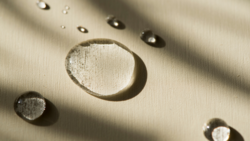What is electricity, really?
12 Apr 2024
Keith’s 79th Blog
This is original material was created entirely by a human, on 2nd April 2024
Question:
Hi Keith, I have a question and maybe it’s not an easy one...
After reading here and there I end up thinking that I really don’t understand what is really an electric signal.
I mean, what exactly is travelling along, for example, a PCB track? Is it a flow of electrons moving? An electromagnetic wave? And if it is an electromagnetic wave, why does it follow the track? If we see an wave as an oscillating field, why should this disturbance travel along the copper track and not anywhere else?
The more I think about this, the more I am aware I don’t understand what is an electric signal. The funny thing is that I am a hardware designer and I have designed circuits that worked!!!
My reply:
Hi, You are questioning the very basis of electricity, having realised that it is not the simple flow of electrons like they teach at school.
When I got stuck on this issue, in the 1980s, I happened to meet my old Electromagnetics Theory lecturer at a conference, and asked him how does the RF current ‘know’ where to flow in a circuit? I knew that all DC, AC and RF currents flow in closed loops, but how did they know in advance which loops to choose when they had a choice of routes?
He simply pointed me to Richard P Feynman’s MIT lectures on Quantum Electrodynamics, for example his book “The Strange Theory of Light and Matter” https://www.amazon.co.uk/QED-Strange-Theory-Penguin-Science/dp/0140125051.
But these days, we can google << Richard P Feynman’s MIT lectures on Quantum Electrodynamics >> and watch the videos of his actual lectures!
Anyway, long story short:
Every natural physical process automatically minimises its energy requirements
E.g. a drop of water lying on a table is a flattened ellipsoid, but a raindrop falling through the air has a tapered shape. In both cases, the shape of the drop automatically compensates for the forces exerted by gravity and air resistance in order to minimise its surface tension energy.
A propagating TEM (Transverse ElectroMagnetic) wave, which is what all electricity really is at frequencies above 0Hz, requires two conductors – which could be anything conductive, even your arm. We circuit designers think of these conductors as the ‘send’ and ‘return’ for our signals, data, and power (yes, everything except DC bias currents is a propagating TEM wave too).
Our designs are arrangements of good conductors and good insulators, and the TEM waves travel in both.
As the frequency increases, less of the wave energy propagates inside the conductors themselves – which is what causes the Skin Effect (that most RF shielding relies on).
A propagating TEM wave will flow along whatever closed loop has the minimum energy requirements. At some frequencies conductors will resonate and have series impedances higher than the air (which is 377 Ohms in free space, but can be a lot lower in the near-field where the air is part of a stray capacitance) – so some fraction of our TEM wave may prefer to leave the wires and traces we want it to travel along, and flow somewhere else.
A similar thing happens when a conductor (or a cavity) resonates so as to create a very low impedance that can ‘suck’ the propagating path away from where our ‘schoolboy’ circuit theory (due to Ampere and Kirchoff) expects it to flow.
When any part of our TEM wave – i.e. our differential-mode (DM, wanted) signal, data, or power – flows in routes other than the send/return conductors we want it to flow in, we get ‘leakage’ that converts some of it into unwanted Common Mode noise, CM noise.
In a data cable, this lossiness is called Longitudinal Conversion Loss (LCL). It is the proportion of wanted DM signal that gets converted into unwanted CM noise, per metre length, usually measured at 100MHz.
Exploring this issue in greater depth is best done by talking together in person, with paper for sketching on. Here are some other things I’ve written on this general issue:
- https://www.emcstandards.co.uk/good-si-pi-and-emc-require-this-most-of-all
- https://www.emcstandards.co.uk/cost-effective-emc-design-by-working-with-the-l
- https://www.emcstandards.co.uk/fundamentals-of-emc-design-our-products-are-tr
- https://www.emcstandards.co.uk/skin-effect-and-surface-currents
- https://www.emcstandards.co.uk/what-s-in-a-name
- https://www.emcstandards.co.uk/clean-earths-aren-t-clean-or-earth
- https://www.emcstandards.co.uk/how-emc-is-achieved-in-199-words
- https://www.emcstandards.co.uk/a-valuable-automobile-analogy-for-quick-and-cos
- https://www.emcstandards.co.uk/accidental-antennas-and-good-electromagneti
- https://www.emcstandards.co.uk/shielding-and-filtering-don-t-work-independen
- And the well-known PCB layout expert Robert Feranec is doing great work in exploring what all this means for PCB design and layout, in a series of interviews with experts on Youtube, e.g. “What Every PCB Designer Should Know - Return Current Path (with Eric Bogatin)” at https://www.youtube.com/watch?v=icRzEZF3eZo
I hope this helps!
All the very best,
Keith
Keith Armstrong
Director and Principal EMC Consultant, worldwide services
Cherry Clough Consultants Ltd
Cell/text: +44 (0)7785 726 643
Landline/fax: +44 (0)1785 660 247
Emails: keith.armstrong@cherryclough.com
karmstrong@ieee.org
keith.armstrong1@outlook.com
Linked In: https://www.linkedin.com/in/keith-armstrong-449801172/
Training, books: https://www.emcstandards.co.uk/online-training
Keith’s Blog: https://www.emcstandards.co.uk/blog

Get more from EMC Standards
EMC Standards is a world-leading resource for all things EMC and EMI related. Our website is packed full of both free and paid-for content, including:
- Online quiz
- Webinars
- Training quiz
- And much more!

Electromagnetic Engineering (EMgineering) is the basis for proven good design practices for signal integrity (SI), power integrity (PI), and the control of EMI emissions and immunity (EMC).
Our aim is to help people learn how to more quickly and cost-effectively design and manufacture electronic equipment (products, systems, installations, etc.) to meet functional (i.e. SI/PI) specifications and conform to EMC standards, directives and other requirements.
Such equipment should benefit from reduced warranty costs and financial risks, whilst improving uptime, competitiveness and profitability.
We also cover basic good electrical safety engineering; and the Risk Management of Electromagnetic Disturbances / EMI, whether for Functional Safety or other types of risk.
Join EMC standards TODAY!

